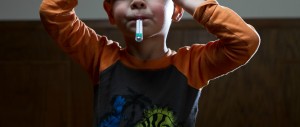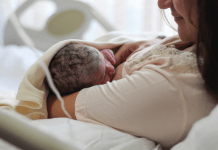A couple weekends ago, my 3.5 year old daughter was sick. She had been running a pretty decent fever, teetering between 102 and 103, and we were managing with tylenol, ibuprofen, cool compresses and lots of rest. While she seemed pretty sick, she wasn’t sick enough to merit a trip to an after hours pediatrics clinic. So, bright and early Monday morning I loaded up my girls and we headed to the doctor.
As we were sitting in the waiting room, she snuggled up against me shivering with chills, although she was still burning up. Then, without warning, one of the scariest events I have experienced as a parent happened. She had a seizure.
I called out to the reception desk for help and a frenzy of nurses rushed to the waiting room and scooped her up. One nurse was audibly counting the seconds the seizure was lasting. Let me tell you, each second she named felt like an eternity. All in all, the seizure lasted under 15 seconds. Longest twenty seconds of my life! Once she stopped, they began to check vitals and administer oxygen.
It was a febrile seizure – convulsions brought on by a high fever.
While I was completely freaking out, everyone around me was so calm, cool and collected. I realize that’s kind of their job, but her pediatrician looked me in the eye and said, “it’s scary to watch but she’s fine, its called a febrile seizure and its brought on by high fever. Stay with her, she will be disoriented when she wakes up. But she is just fine.”
And her doctor was right, she was just fine. She actually had no idea what happened. She woke up with no knowledge of the events that brought her into the exam room. The biggest concern on her mind was the birthday party she was just realizing she was missing.
I had no idea a fever could cause a seizure.
As I was sharing my experience with my family and friends, I realized the whole situation would have been a teeny-tiny bit less scary had I known a little about febrile seizures:
 Febrile seizures are convulsions that can be brought on by high fevers.
Febrile seizures are convulsions that can be brought on by high fevers.- Its ok to freak out a little, but try to stay calm, and know that the vast majority of febrile seizures are short and harmless. There is no evidence that short febrile seizures cause brain damage.
- Febrile seizures are more common than you think. About one in every 25 children will have at least one febrile seizure and they are particularly common in toddlers.
- If your child experiences a febrile seizure, you should make sure they are on a safe surface and cannot fall. You should put them on their side to prevent choking and do not place anything inside their mouth. Call their physician when the seizure subsides.
- Watching your child experience a febrile seizures is scary, no doubt about it. During a febrile seizure, a child can lose consciousness, shake and move their arms and legs.
- If the seizure lasts more than a few minutes or your child turns blue, it may be a more serious seizure and you should call 911.
Of course, never, ever hesitate to call your doctor or 911 if you feel that your child needs immediate medical attention.
Our experience with a febrile seizure happened in the waiting room of our pediatrician’s office. It was kind of a right place at the right time situation for something like that to happen. Looking back, I know it could have been a heck of a lot scarier – we could have been driving, or we could have been at Target! Should this happen again, or happen to my younger daughter, I feel like I will panic just a little bit less. I’ll still freak out, but just not quite as much.














This is a great post and I like the balance between realizing that it is scary but generally not that serious in that kids are usually ok afterwards…
This just happened to my nephew. Terrifying! Her doctor also told her that it’s scary, but “normal” at this age.